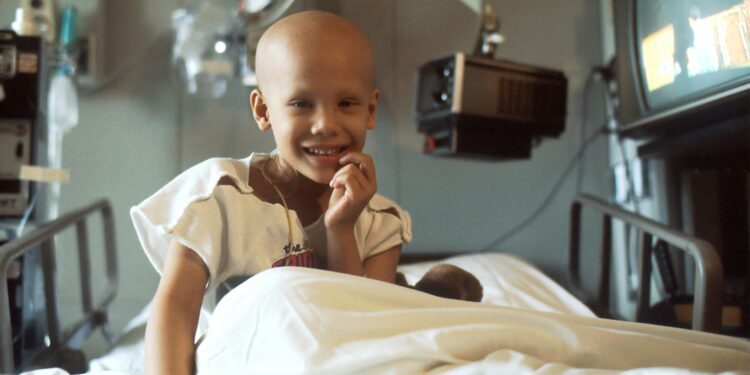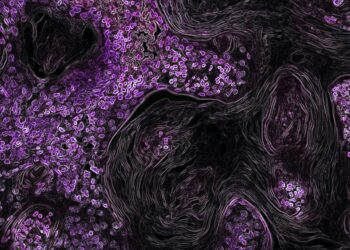One child’s life may have just changed the future of medicine.
In a story that reads like science fiction turned reality, a team of researchers used CRISPR-based gene editing to save an infant suffering from an ultra-rare, previously fatal genetic disorder. The New England Journal of Medicine (NEJM) published the groundbreaking case study in early May 2025, igniting a firestorm of public fascination and scientific debate. The Associated Press followed with a human-centered narrative that quickly spread across social media, leading to over 5 million TikTok views under the tag #CRISPRBabyCure in just a matter of days.
This is more than a viral moment. It is a paradigm shift—an example of personalized medicine not only working, but working in a way previously thought unimaginable: tailored genomic editing, performed with compassionate urgency, for a condition that afflicts fewer than a handful of people on Earth.
It also raises deeper questions—about equity, access, and the long-term implications of customized gene editing in a healthcare system that still struggles to provide basic care to many.
The Science: One Gene, One Shot, One Life
The patient—a young girl named Ottilia—was diagnosed with AADC deficiency, a devastating genetic disorder that disrupts dopamine and serotonin synthesis, leading to seizures, muscle weakness, and near-total immobility. There are fewer than 150 confirmed cases globally, and no FDA-approved treatment. Without intervention, most children with this disorder do not survive early childhood.
Working under an expanded access protocol approved by the FDA, researchers from Boston Children’s Hospital and a biotech startup called GeneScriptix developed a patient-specific CRISPR-based therapeutic. Using lipid nanoparticles as a delivery mechanism, the team inserted a corrected copy of the faulty DDC gene into the child’s neuronal genome, restoring function at the cellular level.
The treatment was administered intravenously. Within four weeks, Ottilia began moving her limbs voluntarily. By three months, she could sit up. By six months, she began vocalizing.
For Dr. Janelle Rowe, the study’s lead author, the moment was “equal parts exhilarating and humbling. We’d seen it work in mice—but watching her respond in real time was something else entirely.”
A Cure That Couldn’t Wait
The approval process was expedited under the FDA’s expanded access pathway, which permits the use of experimental therapies for life-threatening conditions in patients with no other options. But the path was anything but easy.
Because AADC deficiency is so rare, there was no established preclinical pipeline or large-scale trial to draw from. The therapy had to be developed from scratch, with real-time genomic analysis, safety reviews, and manufacturing of a CRISPR payload custom-fit to one child’s mutation.
This marks one of the first real-world applications of what some call n-of-1 medicine—tailored interventions designed for a single person, with no broader commercial market. It’s cutting-edge science, but also a policy gray zone.
“How do we regulate cures that are designed for individuals?” asked Dr. David Liu, gene editing pioneer at the Broad Institute, in a recent commentary. “We need to build ethical frameworks as fast as we build the science.”
Personalized Medicine Goes Viral
What made this story particularly explosive wasn’t just the science—it was the human storytelling that followed. The Associated Press published a widely shared feature that introduced Ottilia’s family, detailing their journey through diagnosis, despair, and eventual hope. TikTok creators, including science communicators and parents of children with rare diseases, began posting explainer videos, emotional reactions, and calls for expanded access to gene editing tools.
Within 72 hours of the story’s publication, the phrase “homegrown gene therapy” began trending, and the NEJM website experienced a 10x spike in traffic. In healthcare innovation circles, this wasn’t just buzz—it was proof of concept.
Teal health journalist Dana Schuster wrote in Healthline:
“We’re witnessing a moment that will live in medical textbooks—but is also being taught in real-time by social media.”
Yet the enthusiasm has been tempered by caution. Advocates for rare disease patients worry that this moment could deepen disparities if similar interventions remain available only to those with elite access to research institutions, funding, or advocacy connections.
The Price of a Miracle
While the specific cost of Ottilia’s CRISPR therapy remains undisclosed, experts estimate it could exceed $2 million when factoring in development, delivery, monitoring, and regulatory overhead. Unlike mass-market drugs, custom gene therapies lack economies of scale, making affordability and accessibility major barriers.
Currently, treatments like Zolgensma, a one-time gene therapy for spinal muscular atrophy, are priced at $2.1 million, the highest drug price on record (STAT News). Without a funding mechanism, these therapies could entrench a two-tiered system of genomic medicine—one for the resourced, another for the rest.
Ottilia’s therapy was funded via a combination of NIH-backed research grants, philanthropic contributions, and university-sponsored clinical infrastructure. That’s not a scalable model.
To truly make personalized medicine equitable, experts argue we need:
- Streamlined regulatory pathways for ultra-rare conditions
- Global data-sharing consortia to accelerate discovery
- Public-private reimbursement frameworks
- Ethical oversight bodies that include patient voices
A Legal and Ethical Frontier
The CRISPR baby cure is not the first time gene editing has ignited controversy. In 2018, Chinese scientist He Jiankui stunned the world by announcing the birth of gene-edited twins—an act widely condemned as unethical and scientifically premature. He was later imprisoned.
What makes Ottilia’s case different is its transparency, regulation, and therapeutic intent. But it reopens the same haunting question: where do we draw the line between therapy and enhancement, urgency and experimentation, equity and exceptionalism?
Critics warn of a “genomic slippery slope,” where rare disease cures might evolve into elective genetic modifications. Others counter that delaying action in the name of perfection is itself a moral failure.
“There is nothing ethically neutral about doing nothing,” writes Dr. Amy Harmon in The Atlantic. “When the technology exists and a child is dying, the burden of proof shifts.”
The Future: Will One Become Many?
Ottilia is now 18 months old. She can say a few words. She plays with her older sister. She is alive—and thriving. But her story is only the beginning.
Teal Health, Spark Therapeutics, and multiple academic labs are now racing to adapt modular CRISPR platforms for other rare pediatric diseases. The FDA is exploring a “plug-and-play” regulatory framework that could fast-track therapies using previously validated delivery vectors.
As machine learning and AI accelerate target identification, the hope is to reduce turnaround from months to weeks, making personalized gene therapy less bespoke and more scalable.
Still, the road ahead is steep. Each success brings new ethical and logistical terrain to navigate. But if Ottilia’s story teaches us anything, it’s that innovation can—and must—be both precise and humane.















